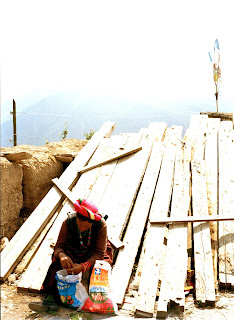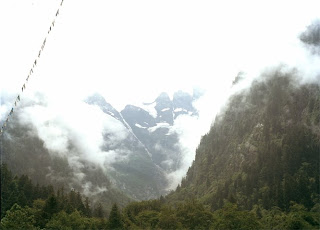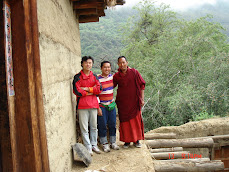A series of photography can be a sketch for an idea for another project that culminates itself into some other medium. The way I think of a photo-documentation of ex-tibet, a part of China now termed as Tibet Autonomous Region, once was Tibet, now populated by Tibetans in ever-changing landscape of China is a definitely sketch for an unknown sculpture, installation, or video project in mind.
I have been interested in Tibet, once a country that used Buddhism as doctrine of its political policy, in other words, peace as a fundamental belief. I wanted to get a hands-on experience of disappearing Tibetan culture before it evaporates into a lost horizon. In 2006, I traveled to Yunnan Province of China, once Kham Province of Tibet, populated by the ethnic minority, Tibetans, and visited a sacred waterfall on Mt. kawa Karpo, one of the three important Tibetan Buddhist Mountains.
As my travel went deeper into the mountain area of Northwestern Yunnan province, I was starting to find nobody that spoke English so I communicated with gestures. In a taxi zigzagging on the rocky road to the village, Xidan, I saw a red umbrella. Under the umbrella, a Tibetan monk was hitchhiking, so we picked him up. With such a limited English the monk knew, we have come to agree to trek together to my final destination, Yubeng. As we trekked from Xidan, my legs started to shake on such a steep climbing and every two minutes I went out of my breath for reaching 3000 m altitude. Every time I couldn't walk anymore, I would stop the monk, Lama Lobsang and offer him candy, fruits, and teaching English words. As we kept stopping and trekking for 5 hours, we have come to know each other without words.
When we entered the flat land of Yubeng, we passed many Tibetans who would stop and listen to Lama's teachings of Buddhism. Thus, everywhere the lama went, he was very welcomed as well as myself accompanying him. We were invited to a dinner at a lodge with Tibetan Yak butter tea. After the dinner, Lama taught Buddhism with such a high-pitched voice with rigorously animated gestures in front of enthusiastic Tibetan family.
The next day, Lama and I headed for Mt. kawa Karpo and Yubeng Shenpu - Sacred Waterfalls. As we walked through the small trek ways with the mist from the waterfall keeping the area damp constantly, so the moss was everywhere like a green carpet. The thick moist air and the silence offered a contemplative road to a sacred waterfall.
As the green road became a permanent snow road, we started to hear the waterfall throwing a large blast of sacred water. The winds changed the directions of slash falling from the cliff of Mt. kawa Karpo with unearthing power of nature. In Tibetan Buddhism that if you go around where the waterfall drops three times, you obtain happiness. So, I managed to circle the blowing drops of icy scared water. As I got drenched completely, somehow I felt the warmth deep inside of me.























































